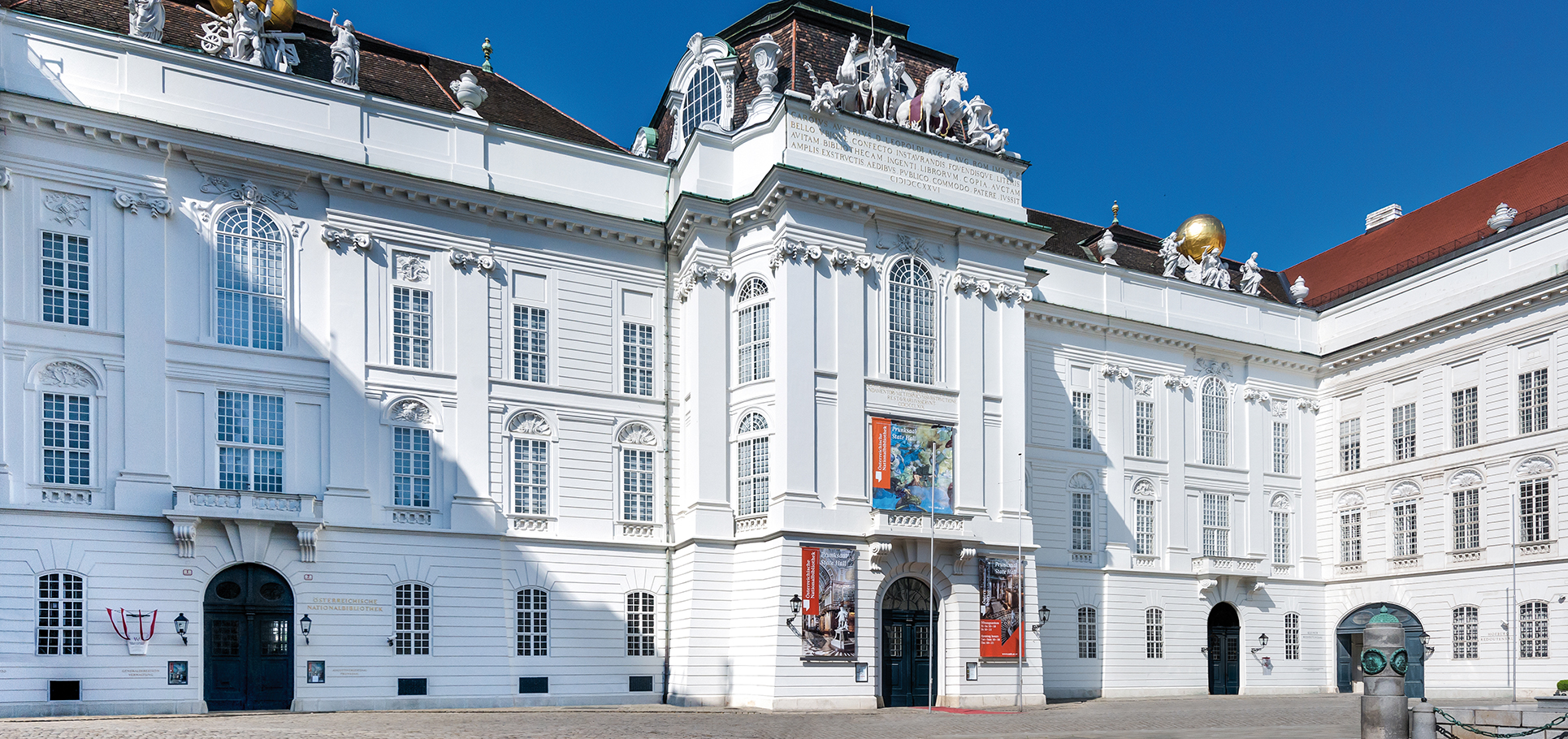The history of the Austrian National Library

From the Middle Ages through the baroque period to the present day: come with us on a short visit through the most important periods in the history of the Austrian National Library!
Over 600 years of history
The historic roots of the Austrian National Library reach back to the late Middle Ages. The earliest book that can still be found in the library today dates back to 1368, a medieval illuminated manuscript: the Gospel book by Johannes von Troppau.
Some other landmark years:
- In 1575, the story of the Austrian National Library as an independent institution began with the official appointment of the first Prefect of the Imperial Library.
- In 1920, the Court Library of the Habsburg Empire became the “National Library”.
- Not until 1945 was it renamed the “Austrian National Library”.
From elitist treasure to the democratisation of knowledge
One particularly fascinating aspect of the history of the Austrian National Library is the social significance of books and libraries over the centuries. Which historical events and inventions did it take to “liberate” books from the medieval treasure chambers of the elite? How did the modern knowledge centre that we know today, open to all, come about?
Click on the milestones to find out more!
» 1368: The medieval treasure
» 1440: Emperor Friedrich III
» 1455: Dispute for the Bohemian heritage
» 1500: Emperor Maximilian I
» 1504: Bibliotheca Regia
» 1514: Scholars and their libraries
» 1575: The first imperial librarian
» 1723: The Baroque world in the Grand Hall
» 1745: Gerard van Swieten
» 1780: The oldest card catalogue
» 1806: National Library of the Austrian Empire
» 1848: Age of reading
» 1920: The Court Library becomes the national library
» 1938: The National Library during the Nazi era
» The Austrian National Library in the Second Republic
